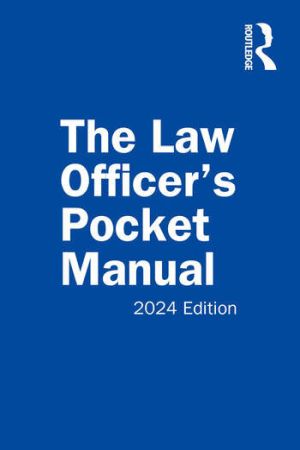
The Law Officer’s Pocket Manual is a handy, pocket-sized, spiral-bound manual that highlights basic legal rules for quick reference and offers examples showing how those rules are applied. The manual provides concise guidance based on U.S. Supreme Court rulings on constitutional law issues and other legal developments, covering arrest, search, surveillance, and other routine as well as sensitive areas of law enforcement. It includes more than 100 examples drawn from leading cases to provide guidance on how to act in a wide variety of situations. The 2023 edition is completely updated to reflect recent court decisions. This book helps you keep track of everything in a readable and easy-to-carry format. Routledge offers tiered discounts on bulk orders of 5 or more copies: For more information, please visit: https://www.routledge.com/collections/16268